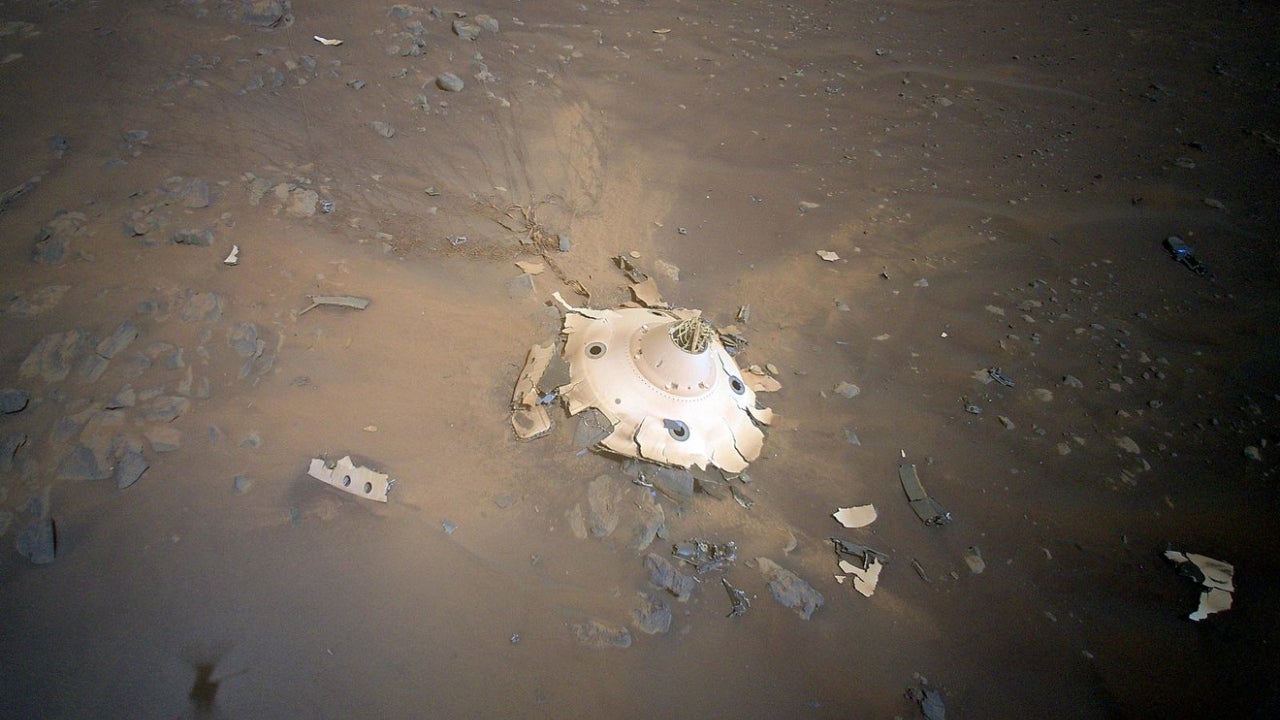
This image of Perseverance’s backshell and parachute was collected by NASA’s Ingenuity Mars Helicopter during its 26th flight on April 19, 2022
(NASA/JPL-Caltech)
Scientists have called for a legally binding treaty to ensure Earth’s orbit isn’t irreparably harmed by the future expansion of the global space industry.
The number of satellites in orbit is expected to increase from the current 9,000 to more than 60,000 by 2030, with estimates suggesting there are already more than 100 trillion untracked pieces of old satellites circling the planet.
While such technology is used to provide a huge range of social and environmental benefits, there are fears the predicted growth of the industry could make large parts of Earth’s orbit unusable, wrote an international collaboration of experts in fields including satellite technology and plastic ocean pollution, the journal Science.
This demonstrates the urgent need for global consensus on how best to govern Earth’s orbit, said researchers, including from the Universities of Plymouth, Arribada Initiative, The University of Texas at Austin, California Institute of Technology, NASA Jet Propulsion Laboratory, Spaceport Cornwall and ZSL (Zoological Society of London).
The experts acknowledged that a number of industries and countries are starting to focus on satellite sustainability, but this should be enforced to include any nation with plans to use Earth’s orbit.
Any agreement, they added, should include measures to implement producer and user responsibility for satellites and debris from the time they launch onward. Commercial costs should also be considered when looking at ways to incentivise accountability.
“Minimising the pollution of the lower Earth orbit will allow continued space exploration, satellite continuity and the growth of life-changing space technology,” said co-author Kimberley Miner, a scientist at the NASA Jet Propulsion Laboratory.
**
The above article has been published from a wire source with minimal modifications to the headline and text.





